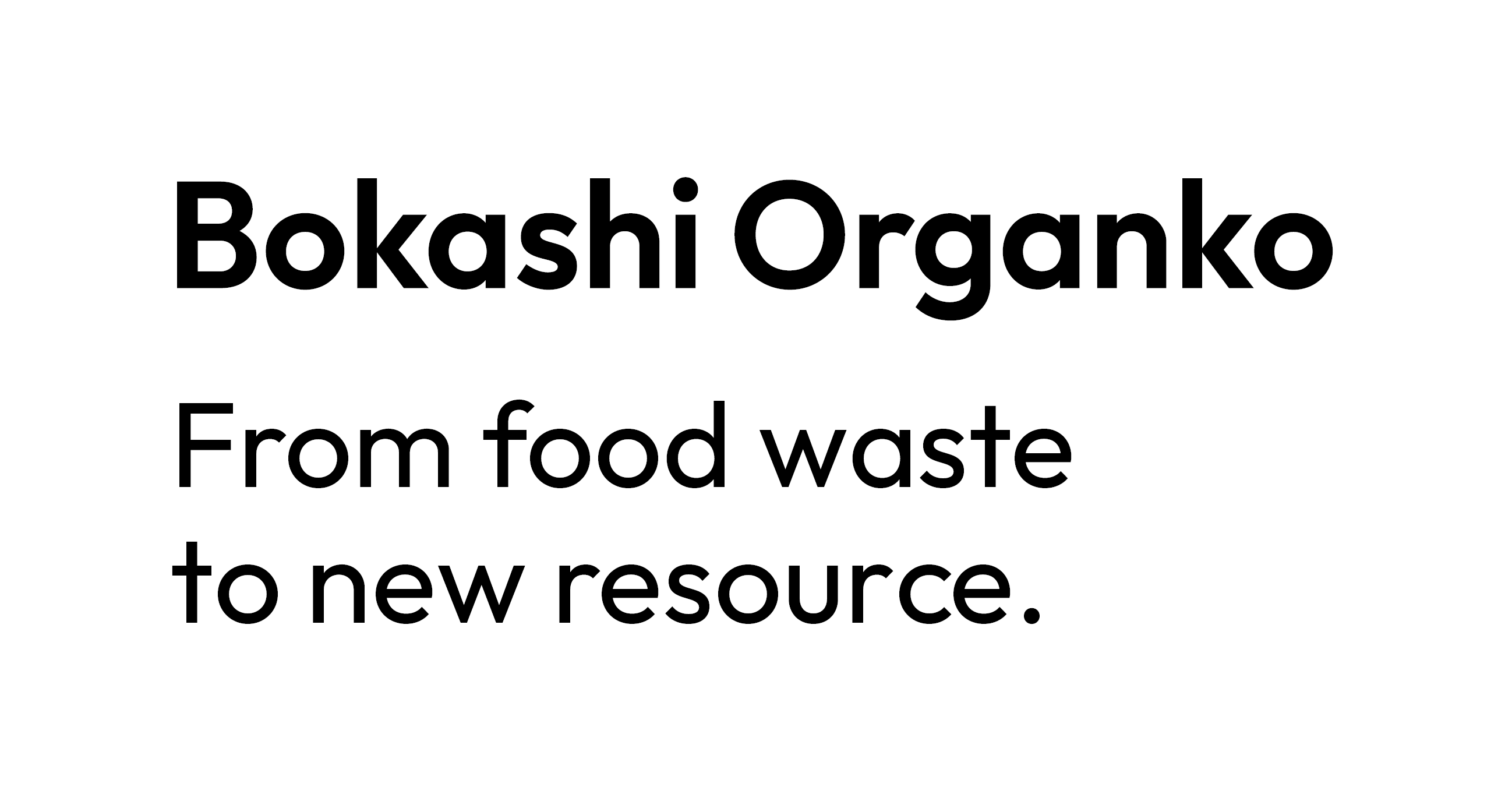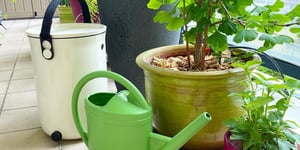While composting used to be limited to people with gardens and lots of outdoor space, the invention of quality Bokashi composters now makes it possible to apply this beneficial organic waste management method in every home. Yes, indoor composting is now available to everyone. Moreover, if you know a thing or two about Bokashi composting, then you are already aware that it delivers a nutrient-rich compost base, known as Bokashi cake or fermented mass, as the main product. However, fewer people know about a very important side product of the process - the Bokashi liquid, also known as Bokashi juice, or Bokashi leachate. Bokashi tea is also often used when referring to Bokashi liquid, though technically, Bokashi tea is a diluted Bokashi liquid.
Furthermore, the great thing about this side product is that using Bokashi liquid for plants enriches your soil and thus enables your herbs, fruits, veggies, and decorative plants to thrive. Herein you will learn how to use Bokashi liquid for plants properly to overcome any potential confusion. Furthermore, by addressing some of the most common questions that users tend to have about Bokashi juice, you will gain a deeper understanding of dos and don’ts when it comes to using Bokashi liquid for plants.
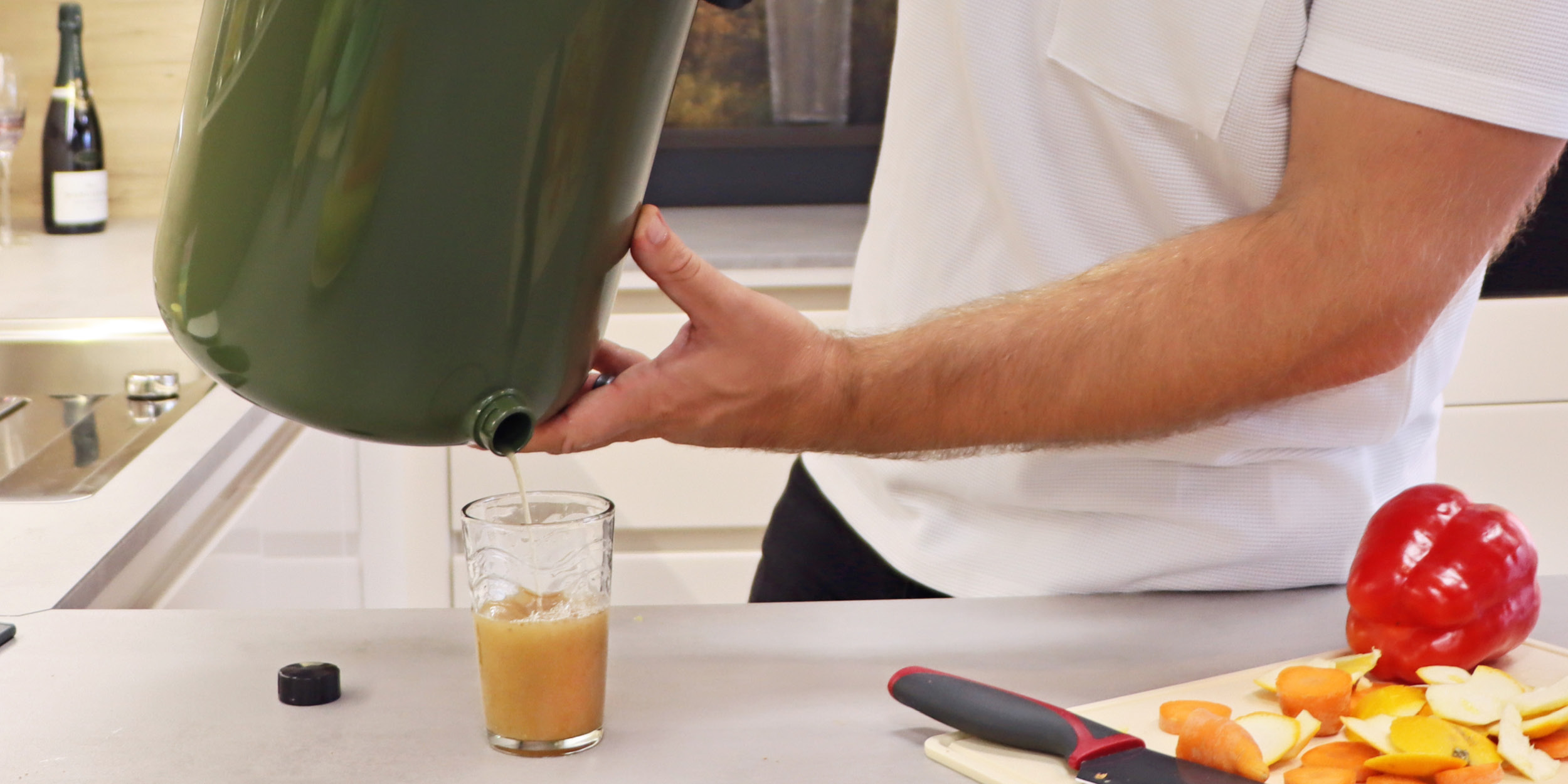
What is Bokashi Liquid?
As mentioned above, Bokashi liquid is a side product of the Bokashi composting process. It forms during the fermentation process of organic material inside a Bokashi composter. As the decomposition of food waste takes place, the liquid drains to the bottom of the Bokashi bin. While this side-product is full of nutrients, making Bokashi liquid great for plants, it is also very concentrated and highly acidic. Thus, you can’t just pour it over your garden soil, let alone your plants’ foliage. As such, it is vital to learn how to use Bokashi liquid for plants properly and avoid damaging your precious vegetation.
The Use of Bokashi Liquid
Many people are not aware of the benefits of Bokashi liquid and tend just to pour it down the drain. By doing so, they actually, without even knowing, also benefit from one of Bokashi juice’s popular use cases - cleaning drains. Concentrated Bokashi liquid is highly acidic and serves as a powerful drain cleaner while being safe for the environment. It has the power to unclog drains and eliminate that unpleasant smell coming out of the sink.
On the other hand, the Bokashi leachate may also be diluted to create Bokashi tea, which is an essential step when it comes to using Bokashi liquid for plants. The exact water-to-Bokashi-liquid ratio is hard to determine. However, we will provide you with a guideline that helps you stay on the safe side.
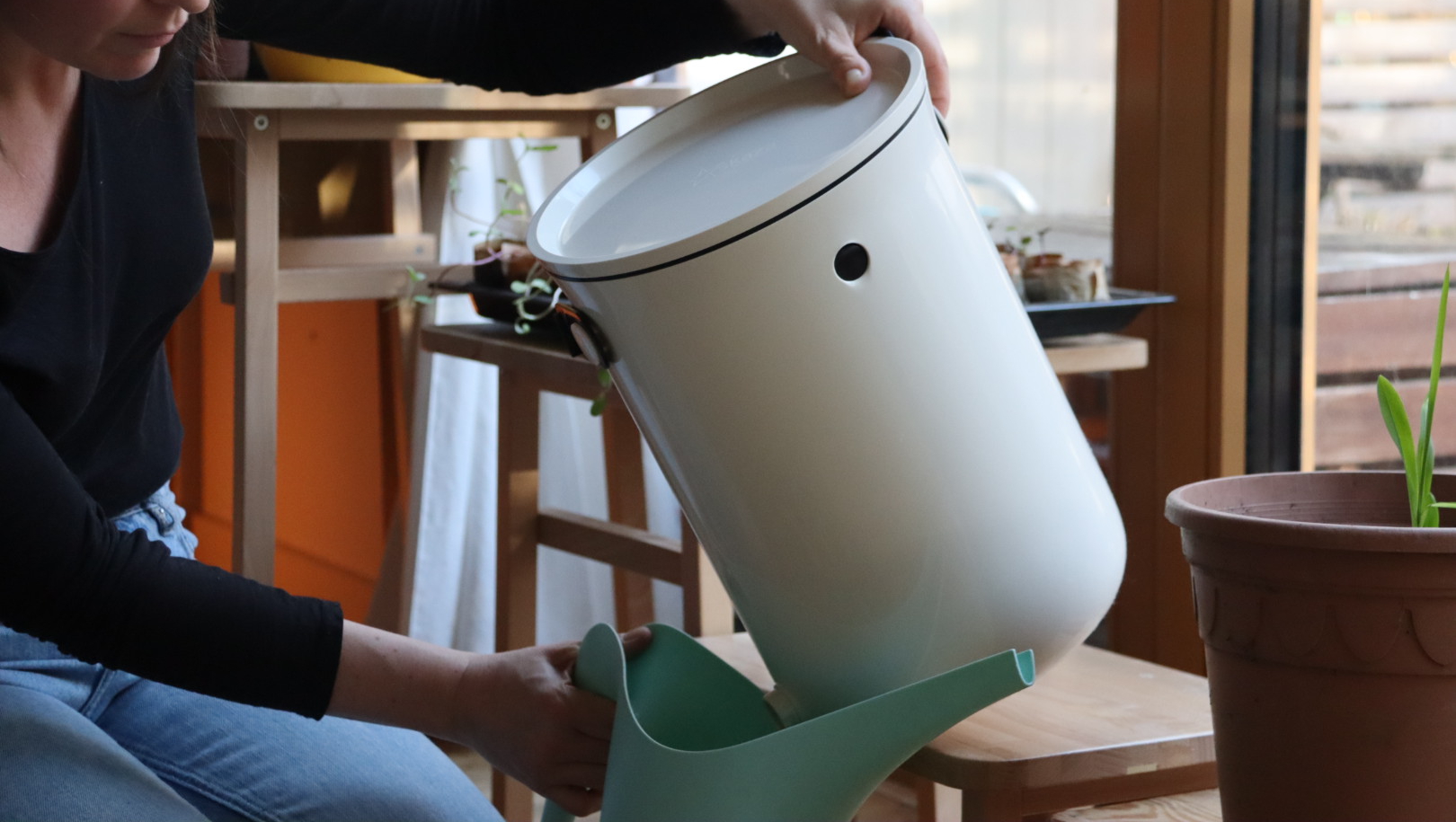
Bokashi liquid for plants - Organic Fertilizer
Yes, Bokashi juice is an amazing organic fertilizer. It contains countless beneficial microorganisms and nutrients that your soil and plants crave - it is microbiologically rich. This includes a wide range of antioxidants, enzymes, and natural antibiotics, all of which can feed your plants and also unlock the maximum potential of your soil.
Moreover, luckily the natural law of gravity does all the heavy lifting for you as it ensures that the Bokashi liquid accumulates at the bottom of the Bokashi composter. And, when you use a high-quality Bokashi bin, it comes with a valve that will enable you to access the liquid easily.
How to Use Bokashi liquid for plants - Simple Guidelines
Ok, let’s assume that you already have a proper Bokashi composting bin and that you’ve already placed some organic waste and Bokashi bran in it. This means that the fermentation process is well on its way and thus the production of the side product. You can use any kind of container to collect the Bokashi liquid from your bin.
Moreover, while there are ways to store the Bokashi juice, we recommend using it fresh. To do so, you need to dilute the collected liquid (if you plan to use Bokashi liquid for plants).
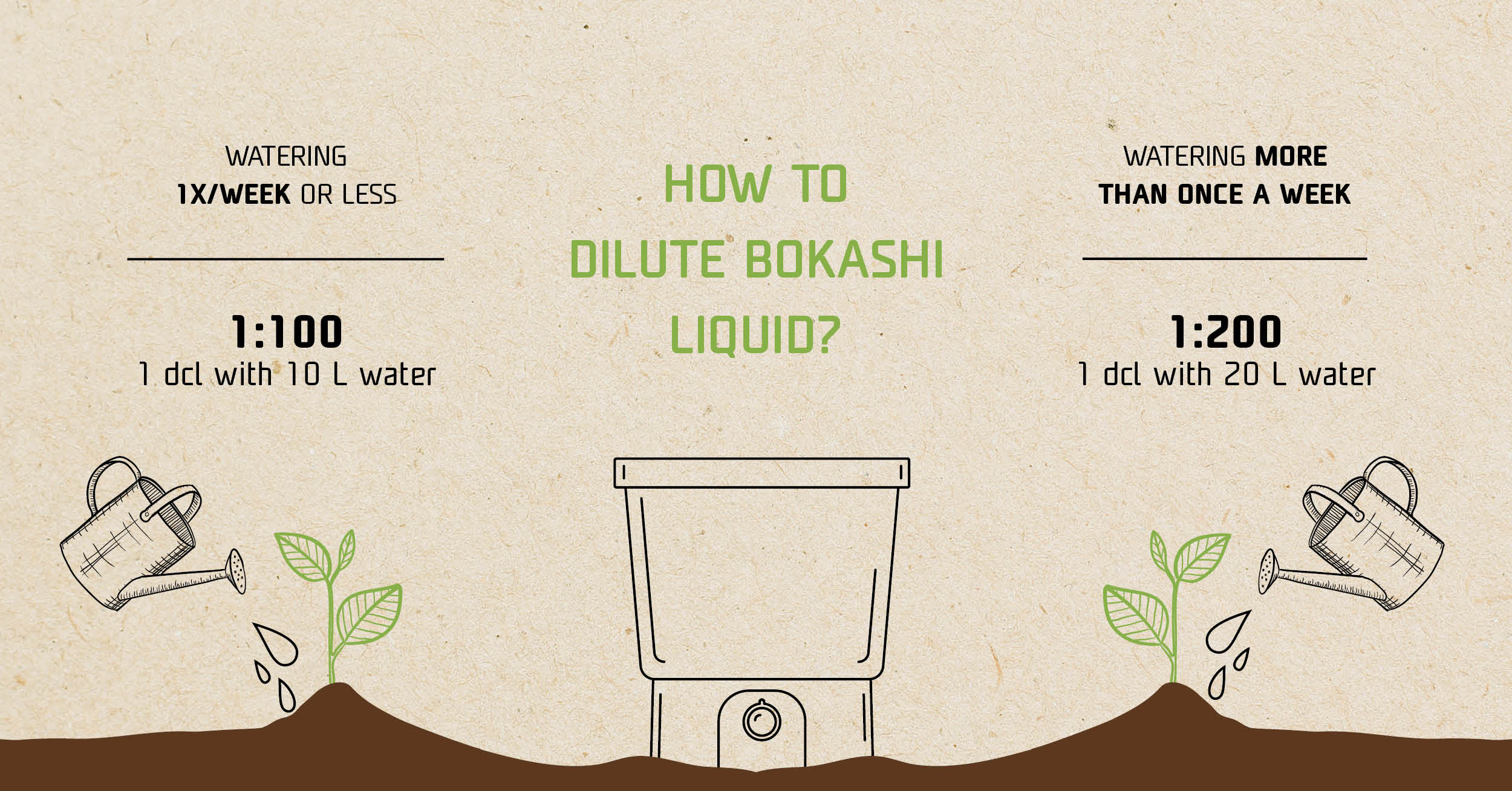
As mentioned previously, the exact acidity and nutrient composition of your Bokashi liquid depend on the content of your bin, the time that has passed, and more. As such, you will find a wide range of recommendations for water to Bokashi juice ration out there. 100 to 1 is a common guideline, and however, in case you are dealing with a very acidic juice and more sensitive plants, this can still be too powerful. Thus, we recommend our readers to follow a safer path, which sticks to the 200 to 1 ratio. This means that 10 milliliters of the Bokashi liquid are mixed with 2 liters of water.
Once you have diluted Bokashi tea at your disposal, it is time to fertilize your garden or potted plants. It is still best to pour or spray it directly on the soil, as the leaves of your plants are way more sensitive. Moreover, it is the soil where your plants get the nutrients anyway.
Furthermore, while there are recommendations to use Bokashi tea fertilizer every week or even with every watering, we advise you not to use it more often than every 14 days. If you are convinced that your plants need more nutrients, then you may increase the frequency, yet once even 2 weeks should normally suffice.
Aside from the above, Bokashi tea may also be used to fertilize the grass. Just spray it all over your lawn and be amazed by the results.
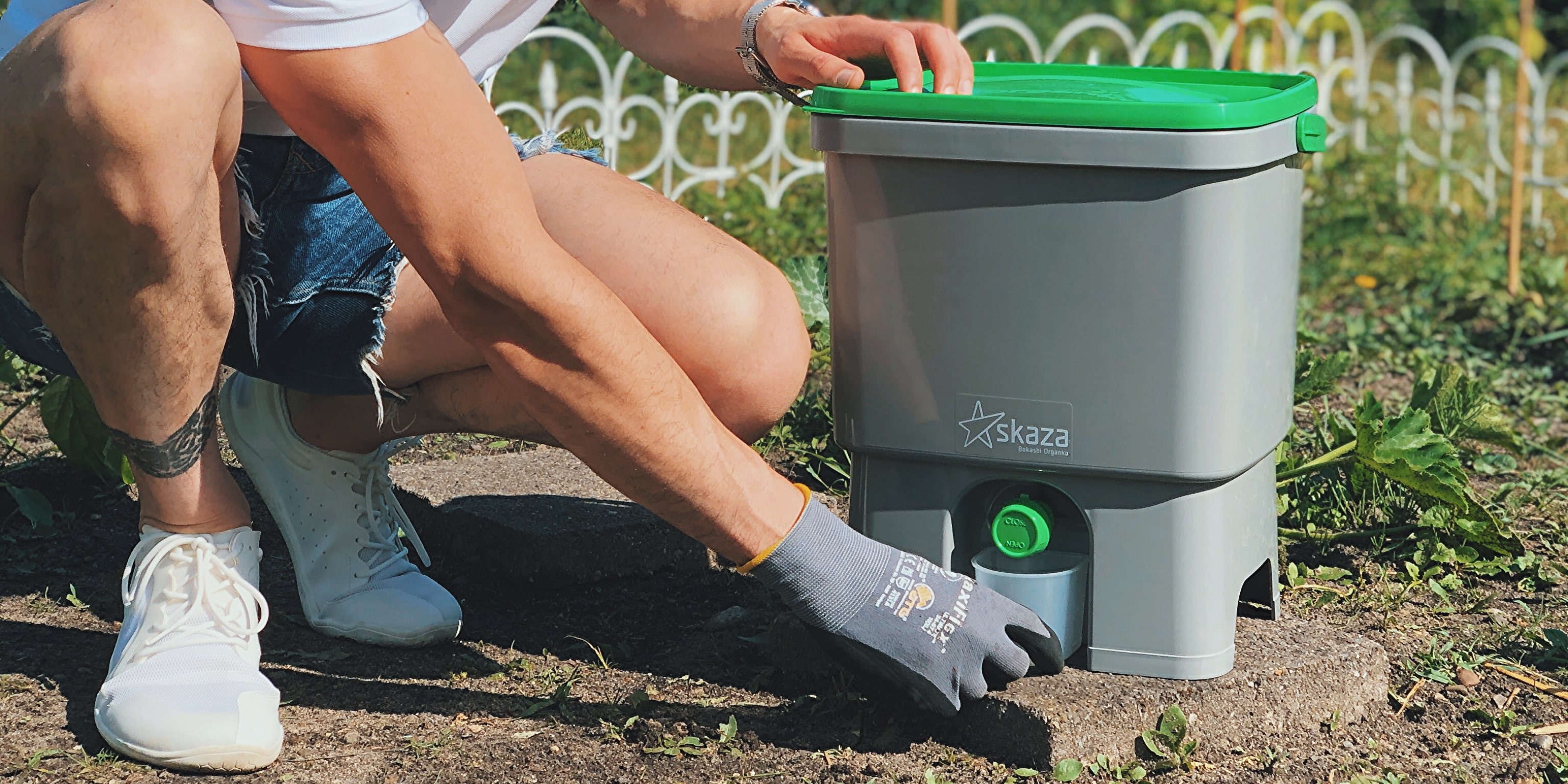
How to Use Bokashi liquid for plants - FAQs
As promised, we will answer some of the most frequently asked questions about using Bokashi liquid for plants.
Q: How much time is required to get Bokashi liquid from my indoor composter?
A: It all depends on the materials that you are putting in your bokashi composter; however, you can typically expect to get bokashi tea after a couple of days.
Q: How much Bokashi liquid should I get?
A: As explained before, it depends on the food scraps you are collecting into your Bokashi composter. For instance, If you are adding a decent amount of juicy fruit peelings and rinds, you can expect to get more liquid. Of course, the opposite is true if your food waste is very dry. On average, you can expect anywhere between a couple of tablespoons to around 1-2 cups every day or two (that is when the fermentation process is well underway).
Q: What to do if you are not getting any Bokashi liquid?
A: This means that your organic waste is very dry. Moreover, this may also indicate that you should use more fresh vegetables and fruits in your food preparation. Of course, primarily to benefit your wellbeing; however, as a result, you will also get more Bokashi juice. You can also pour some water into your compost to add moisture.
Q: How often should I collect the Bokashi liquid?
A: You can try and collect it every day. However, the amount of it will depend on the factors explained in the previous answers. For an average Bokashi composter, a couple of times per week should do.
Q: How long can Bokashi liquid be stored?
A: As advised in the article above, we recommend you to use it fresh. However, if stored properly, it can be good for 2 weeks or even more.
Q: Is the Bokashi liquid pet safe?
A: Concentrated liquid is highly acidic, so make sure to keep it out of your pets’ reach. Though, based on our experience, pets know it is too acidic for them and do not want to drink it. On the other hand, if your pet drinks diluted Bokashi tea, there is no need to worry.

